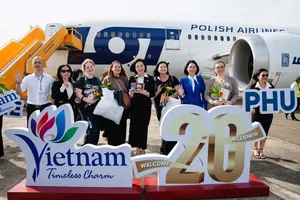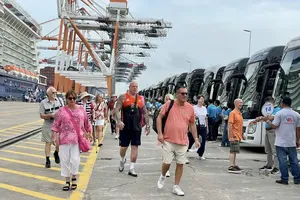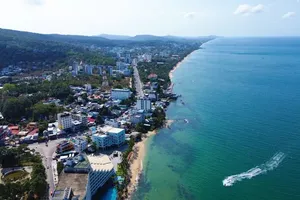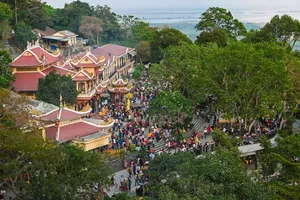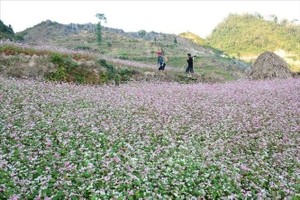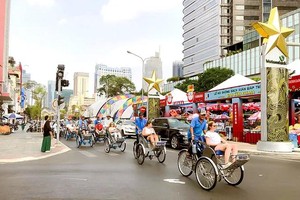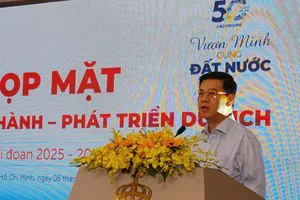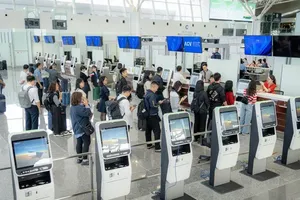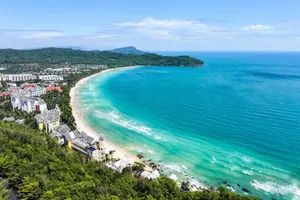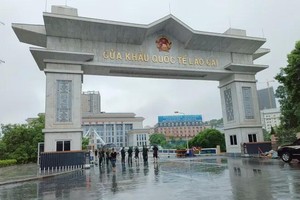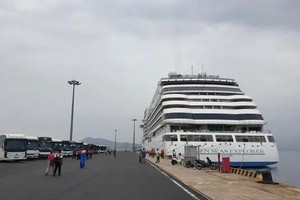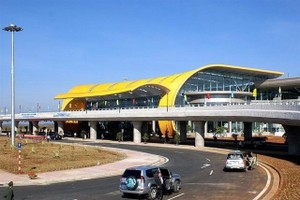
Under the tourism system planning, Vietnam will become an attractive destination with high tourism development capacity by 2025. The tourism industry will be turned into a spearhead economic sector and achieve green economic growth as well as become one of the world's leading destinations with high development capacity by 2030.
The country’s tourism sector is expected to receive 25-28 million international visitors and 130 million domestic travelers, and maintain a growth rate of 8-9 percent per year in 2025; target 35 million foreign tourists and reach a growth rate of 13-15 percent per year, welcome 160 million domestic visitors and grow 4 - 5 percent per year by 2030; and directly make a contribution of 8-9 percent to GDP growth by 2025 and 13 - 14 percent by 2030.
According to the plan, the tourism sector will create 6.3 million jobs, including 2.1 million direct jobs by 2025; and 10.5 million jobs, including 3.5 million direct jobs by 2030.
Sustainable tourism development is linked with environmental protection and effective response to climate change. By 2030, tourist attractions and places, acommodation establishments, and service facilities along the coast will stop using single-use plastic products and non-biodegradable plastic bags.
By 2045, the tourism industry is expected to serve as a driving force for the economy, become a prominent global destination, and be named among the leading global countries in travel and tourism development. The plan targets 70 million international tourists and revenue of VND7,300 billion (US$287 million), contributing 17-18 percent of GDP.
According to the plan for the domestic tourism market, the sector is expected to maintain growth momentum in the 2021-2025 period; and strengthen market segments of high-spending and long-stay visitors, and emerging markets of sports tourism and adventure tourism in the 2026-2030 period.
In the international market, the plan will focus on recovering traditional markets and attracting emerging markets such as India and the Middle East in the 2021-2025 period.
In the 2026-2030 period, the tourism industry will maintain and expand the scale of traditional markets, including Northeast Asia, Southeast Asia, Europe, North America, Russia and Eastern Europe, and Oceania; diversify markets and pay attention to the markets of tourists with high spending.
Regarding the direction of tourist product development, the industry will optimally exploit sea and island tourism to develop tourist products with regional competitive capacity in beach and leisure tourism, marine ecotourism, cruise tourism; and luxury beach resorts.
In addition, the plan will promote local cultural values in the regions of the country to create tourist products associated with heritage, festivals, cuisine and lifestyles; connect Vietnamese heritage with countries in the region and in the world; effectively integrating tourism with the cultural industry; and effectively blend tourism with cultural industry.
The development of tourist products will be associated with major urban areas such as Hanoi, HCMC, Da Nang, Hai Phong, and Can Tho; unique cities such as Hoi An ancient town in Quang Nam Province and Hue ancient capital in Thua Thien- Hue Province; and key tourism development cities including Sa Pa in Lao Cai Province, Ha Long in Quang Ninh Province, Nha Trang in Khanh Hoa Province, Da Lat in Lam Dong Province, Phan Thiet in Binh Thuan Province, and Phu Quoc in Kien Giang Province.
The tourist products must be linked with cultural industries and the night-time economic development.
In addition, the plan will develop new types of tourism to diversify products in accordance with new market trends, including medical and wellness tourism, agricultural and rural tourism, sports tourism, adventure tourism, MICE (Meetings, Incentives, Conferences, and Exhibitions) tourism, educational tourism, cruise tourism, industrial tourism.
Vietnam will establish a system of national tourist areas and potential places to be developed into national tourist sites.
The plan will also form six areas of dynamic tourism development, including Hanoi - Hai Phong - Quang Ninh - Ninh Binh; Thanh Hoa - Nghe An - Ha Tinh; Quang Binh - Quang Tri - Thua Thien-Hue - Da Nang - Quang Nam; Khanh Hoa - Lam Dong - Ninh Thuan - Binh Thuan; HCMC - Ba Ria-Vung Tau by 2030; and Can Tho - Kien Giang - Ca Mau; and two more others including Lao Cai - Ha Giang and Hoa Binh - Son La - Dien Bien after 2030.
On June 13, Deputy Prime Minister Le Minh Khai also requested a clarification of the reasons for the decline of Vietnam’s tourism development index and asked for solutions to improve the tourism development index as well as attract international tourists.
According to the World Economic Forum’s Travel and Tourism Development Index 2024, Southeast Asian countries experienced a drop in rankings, including Vietnam which witnessed a decline of three places compared to 2021.

